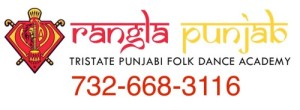The Science Behind Volcanic Rock Dating: Accuracy and Methods Explored
Unveiling the Clocks Within Rocks: Radiometric Dating Deciphered
Beneath the Earth's crust lies a hidden chronicle of geological history, waiting to be told by the very stones we tread upon. Radiometric dating, the science that allows us to recognize the remnants of time embedded within volcanic rocks, is akin to a masterful detective deciphering the secrets of an ancient scroll. At the heart of this investigative science are unstable chemical elements, known as isotopes, which decay at predictable rates. As they transmute from one element to another, they keep the pace of a natural clock, ticking away the eons.
To unveil the age of a volcanic rock, scientists first identify a suitable isotope. For example, the decay of potassium-40 to argon-40 is routinely employed to date rocks that are millions of years old, a method known as K-Ar dating. When the molten rock solidifies, the clock startspotassium-40 is trapped inside, and the decay process begins. Over time, the parent isotopes convert into stable daughter isotopes at a constant rate, known as a half-life, specific to each radioactive element. By measuring the ratio of parent to daughter isotopes, geologists can calculate the rock's age with remarkable precision.
The radiometric clocks within rocks are not without their complexities; various factors can influence their accuracy. For instance, if the rock has been subjected to high heat or pressure, the "clock" might be reset or affected, an event geologists must account for during analysis. Furthermore, to ensure reliability, multiple samples and isotopic systems are often dated. This layered approach not only enriches the narrative of Earth's volcanic activity but also builds a robust foundation for the study of our planet's past. By combining meticulous laboratory techniques with a nuanced understanding of geologic processes, researchers can lay bare the story of Earth's formative years with compelling accuracy and depth.
Tackling the Ticking Timeline: Evaluating Radiometric Dating Accuracy
In the quest to chronicle Earth's past, scientists meticulously assess the efficacy of radiometric methods, knowing our grasp of geologic time hinges on the precision of these atomic clocks. Paramount among these techniques is the Argon-40/argon-39 dating method, which has emerged as a crucial tool in dating volcanic rocks. When a volcano erupts, the intense heat expels all argon gas trapped in the molten rock. As the rock cools and solidifies, argon-40produced by the decay of naturally occurring potassium-40begins to accumulate. Researchers then measure the ratio between argon-40 and its stable variant, argon-39, which is artificially introduced into the sample. This ratio serves as a digital timestamp, revealing the age of the rock with considerable precision.
However, the reliability of this technique is not unassailable and is subject to scrutiny. Factors such as argon loss or excess argon can skew results, leading to under- or overestimation of the rock's age. To bolster the accuracy of their readings, geologists often cross-verify argon-based data with other radiometric methods, like uranium-lead dating, particularly when referencing zircon crystals within volcanic rock. Each dating method comes with its own set of assumptions and potential errors, but by employing a multi-faceted approachcombining various dating techniques and calibrating them against one anotherscientists can triangulate a more accurate estimate of a rocks true age.
The chronometric landscape is complex, and staying vigilant about the methods' limitations compels researchers to refine their techniques continually. The introduction of more advanced mass spectrometers and the development of sophisticated data analysis protocols have significantly enhanced the precision of age determinations. Pioneering efforts to understand and mitigate sources of error endorse the overall reliability of radiometric dating, making it an indispensable stratagem in the geologist's toolkit. As the narrative of our planet's fiery origins continues to unfurl, the accuracy with which we can interpret these ancient volcanic autographs becomes ever more critical in piecing together the puzzle of Earths dynamic history.
Is It Worth Swiping on Facebook Dating Effectiveness Explored, Behind the Love Algorithm Insights into Black Mirror's Hang the DJ Episode, Connect with Your Match Premier Senior Matchmaking Services Explored, Echoes of Romance Connect with Singles on Our Rock Music Dating Site, Inside Look The Revealing Truth Behind Dating Naked, Swipe Right for Laughter Top Funny Dating Site Memes Revealed
